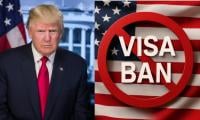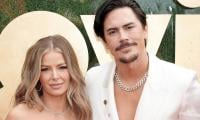The unfortunate case of the PMDC
On Sunday October 20, 2019 after President Arif Alvi promulgated the recent Pakistan Medical Commission Ordinance 2019, the Pakistan Medical and Dental Council (PMDC) was dissolved and its offices were shut down upon the orders of the Government.
According to the official press release issued by the Ministry of Information and Broadcasting, this was to ensure that the essential records and assets of the erstwhile council are protected till the Pakistan Medical Commission (PMC) begins its operations.
This sudden and rather clandestine move has stirred public outcry from various factions of society including the Pakistan Medical Association (PMA), Association of University Physicians and Surgeons Pakistan (AUPSP), Young Doctors Association (YDA), former employees of the former council and of course, the opposition.
According to the PMC Ordinance, the federal government is to create a commission comprising the Medical and Dental Council, the National Medical and Dental Academic Board and the National Medical Authority, each having various powers and functions. Although Special Assistant to the Prime Minister on Health Dr Zafar Mirza stated that this ordinance was the need of the hour to address all issues related to medical education, the move does not seem as apolitical as the government claims it to be.
The red flag is the unusually overwhelming role of the prime minister in the appointments of the members of the council and the board. The members of both the council and the board, all of whom are to be nominated and not elected, are to be notified after the prime minister’s approval. Seven out of nine members of the council and seven out of 19 members of the board are to be nominated by the prime minister as opposed to the federal government. That means that the prime minister’s nominees are in majority in the council, which interestingly requires a simple majority vote to take decisions.
Not only that, the authority is to be made up of seven members to be appointed by the council which, as mentioned earlier, is composed of a majority of the prime minister’s nominees. This is in stark contrast to the erstwhile council that existed from time to time under the Medical and Dental Ordinance 1962 and subsequent amendments. The former councils had a mix of elected, ex-officio and nominated members out of which only four were to be nominated by the federal government –ie the cabinet as a whole, as opposed to any one minister.
Therefore it appears that the new PMC Ordinance has been structured in such a way so as to safeguard the stronghold of the ruling political party. However, this infatuation with the PMDC by the government of the day is not a new phenomenon. Former president Asif Ali Zardari had issued the Medical and Dental (Amendment) Ordinance 2013 while former president Mamnoon Hussain had issued the Pakistan Medical and Dental Council (Amendment) Ordinances of 2014 and 2015, all of which were aimed to ensure the monopoly of their respective governments over the PMDC.
It is also interesting to note that earlier this year in January, President Alvi had promulgated the Pakistan Medical and Dental Council Ordinance, 2019 which lapsed by the end of August, although there are mixed reports as to whether it was ultimately withdrawn by the government or disapproved by the Senate. Despite one unsuccessful attempt, the government decided to go ahead with round two and issued the PMC Ordinance, albeit in vain. The question arises: how many rounds can take place before this matter starts to raise issues of constitutionality?
While terming the PMC Ordinance a fraud on the constitution, the PML-N’s Senator Javed Abbasi claimed that its promulgation violated a Supreme Court order. He was, in fact, referring to the judgment of the Supreme Court dated 12.01.2018 delivered in Civil Appeal No 3/2018. As luck would have it, the case pertained to the PMDC and the one of the questions involved was whether after the lapse/repeal of the PMDC Amendment Ordinances of 2013, 2014 and 2015 the amendments/substitution made thereby would survive or be gone with them which was ultimately answered in the negative. Be that as it may, in its detailed opinion, the Supreme Court defined the scope of the president’s power to promulgate ordinances under the constitution by holding that re-promulgation of ordinances, especially when the earlier ones were either not approved or disapproved by parliament, is a fraud on the constitution and a subversion of the democratic legislative processes.
While both the 2019 ordinances are based on the same subject – regulation of the medical and dental profession – there are differences in their respective schemes. Since they are clearly not identical, whether the re-promulgation of the PMDC Ordinance 2019 and the PMC Ordinance 2019 – which are similar and pertain to the same subject matter – is a fraud on the constitution remains a moot point.
However, in the same judgment, the Supreme Court also observed that ordinance-making power under Article 89 of the constitution does not constitute the president into a parallel source of law-making or an independent legislative authority, and that the president’s authority to promulgate an ordinance is not absolute; rather it depends upon the necessity of immediate action and the non-availability of a session of the Senate or the National Assembly.
What could possibly have been the circumstances that existed, and which rendered it necessary for the president to take immediate action to surpass parliament and revamp the body that regulates the medical and dental profession, not once but twice after an initial failed attempt? What were the extenuating circumstances that required the government to shut down the offices of the erstwhile council overnight rendering hundreds of employees redundant and leaving the medical and dental profession astounded and confused? These are pertinent questions. Hopefully, the superior judiciary will provide answers in light of the recent petition filed in the Islamabad High Court challenging the issuance of multiple ordinances by the incumbent president.
It is unfortunate that the body responsible for regulating the medical and dental profession in Pakistan has always been shrouded in political mystery. What is even more unfortunate is that the current government, which calls itself a torchbearer of democracy, has failed to lead by example. It attempted to create a commission devoid of any elected members and which reverberates with the sound of a one-man show.
The extraordinary keenness of the government of the day to revamp the medical and dental profession regulatory body through presidential ordinances like its predecessor governments certainly does not bolster the PTI’s mantra of tabdeeli.
The writer read law at Harvard Law School.
Email: sqaiser@llm18.law.harvard.edu
-
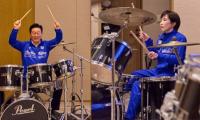 Enjoy Lee, Takaichi’s Viral Jamming Session, In Case You Missed It
Enjoy Lee, Takaichi’s Viral Jamming Session, In Case You Missed It -
 MrBeast Admits He's Unsure About Having Kids - Here's Why
MrBeast Admits He's Unsure About Having Kids - Here's Why -
 Prince Harry Carries Heartbreaking Hope For Archie, Lilibet Who Are Not Sharing In Their Royal Heritage
Prince Harry Carries Heartbreaking Hope For Archie, Lilibet Who Are Not Sharing In Their Royal Heritage -
 Tom Brady Breaks Silence On 'personal Life' After Alix Earle Rumors
Tom Brady Breaks Silence On 'personal Life' After Alix Earle Rumors -
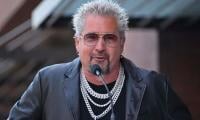 Guy Fieri Drops Health Update After Accident That Left Him In A Wheelchair
Guy Fieri Drops Health Update After Accident That Left Him In A Wheelchair -
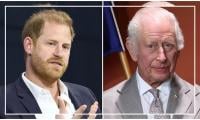 Experts Weigh In: Is Prince Harry Operating A PR Stunt Or The Invictus Games’
Experts Weigh In: Is Prince Harry Operating A PR Stunt Or The Invictus Games’ -
 Inside Kate Middleton’s Biography With Secrets From St Andrews To Harry & Meghan’s Royal Exit
Inside Kate Middleton’s Biography With Secrets From St Andrews To Harry & Meghan’s Royal Exit -
 Paul Mescal Reveals Shocking Move He Made In 'Hamnet'
Paul Mescal Reveals Shocking Move He Made In 'Hamnet' -
 'Kanye West Is Human Too'
'Kanye West Is Human Too' -
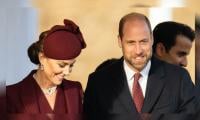 Prince William Hands Kate Middleton Something Highly Sensitive To Manage With Coronation
Prince William Hands Kate Middleton Something Highly Sensitive To Manage With Coronation -
 Critics Get Honest About 'A Knight Of The Seven Kingdoms'
Critics Get Honest About 'A Knight Of The Seven Kingdoms' -
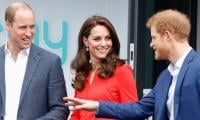 Why Harry Unlikely To Meet William, Kate During UK Return?
Why Harry Unlikely To Meet William, Kate During UK Return? -
 X To Change AI Chatbot 'Grok' After Outrage Over Explicit Deepfake Images
X To Change AI Chatbot 'Grok' After Outrage Over Explicit Deepfake Images -
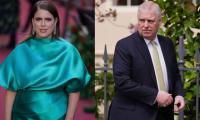 Princess Eugenie Set To Hit New Milestone As Andrew's Eviction Looms
Princess Eugenie Set To Hit New Milestone As Andrew's Eviction Looms -
 Emilia Clarke Gets Honest About Featuring In Shows Like 'Game Of Thrones'
Emilia Clarke Gets Honest About Featuring In Shows Like 'Game Of Thrones' -
 Amazon Employees’ Break-time Fight Ends In Murder In Texas
Amazon Employees’ Break-time Fight Ends In Murder In Texas

